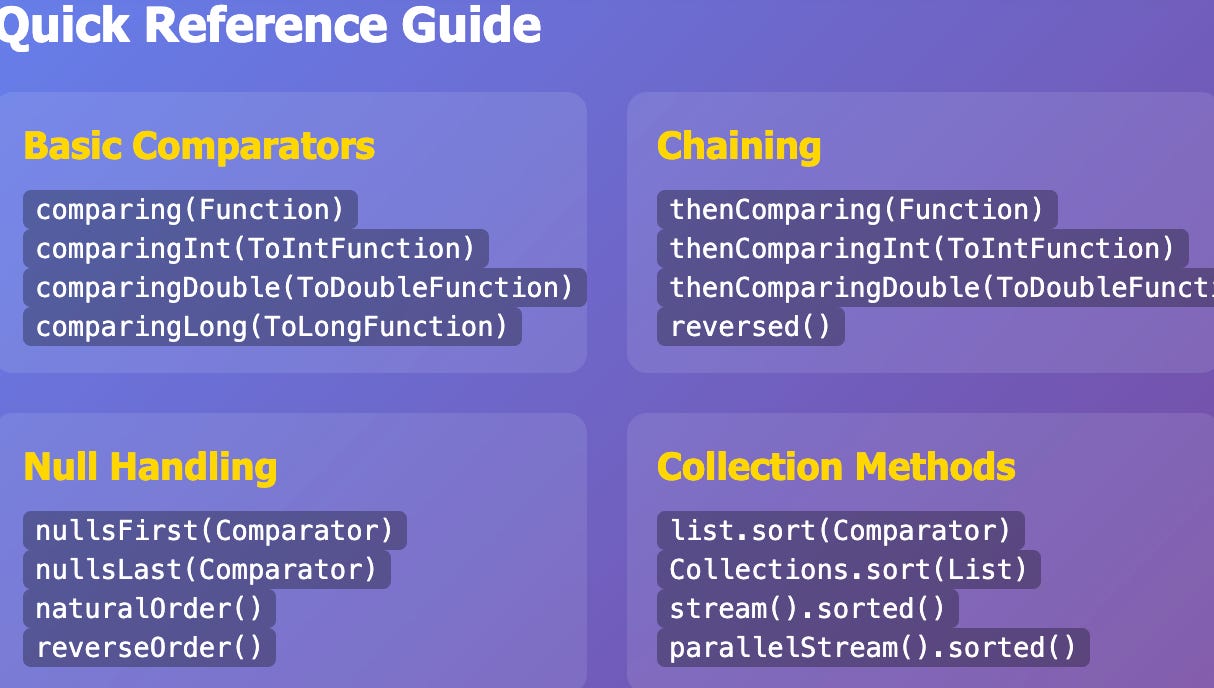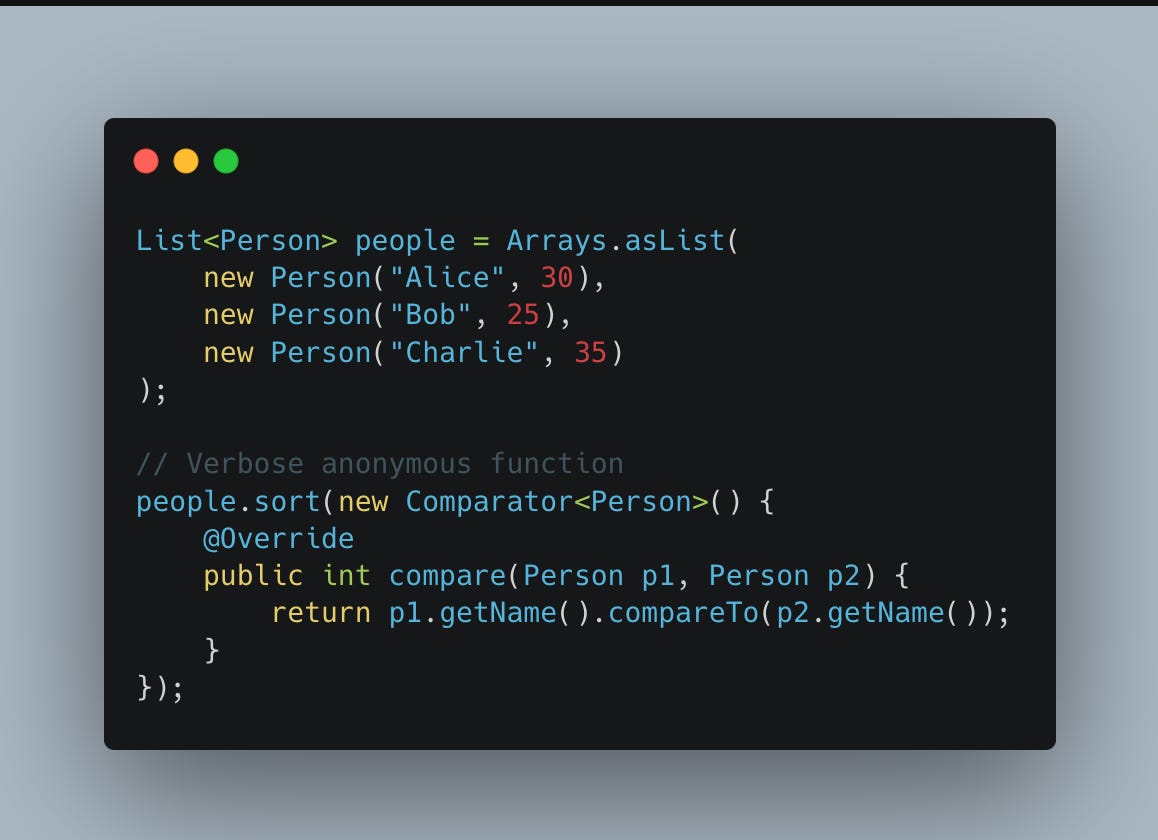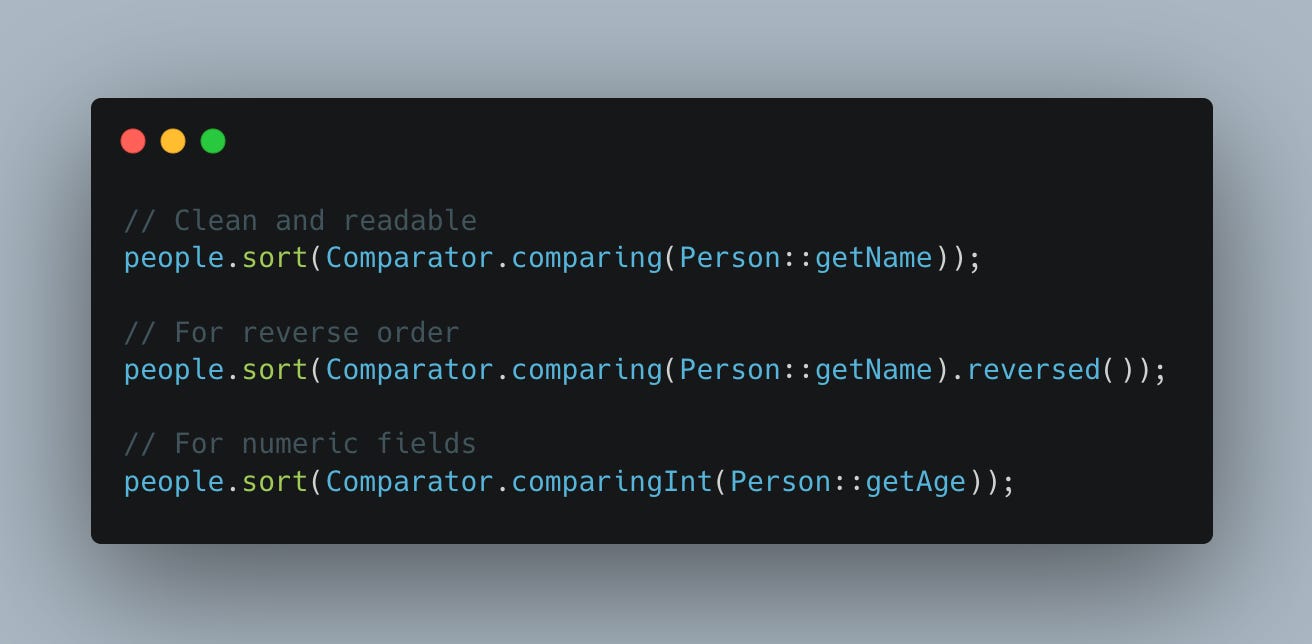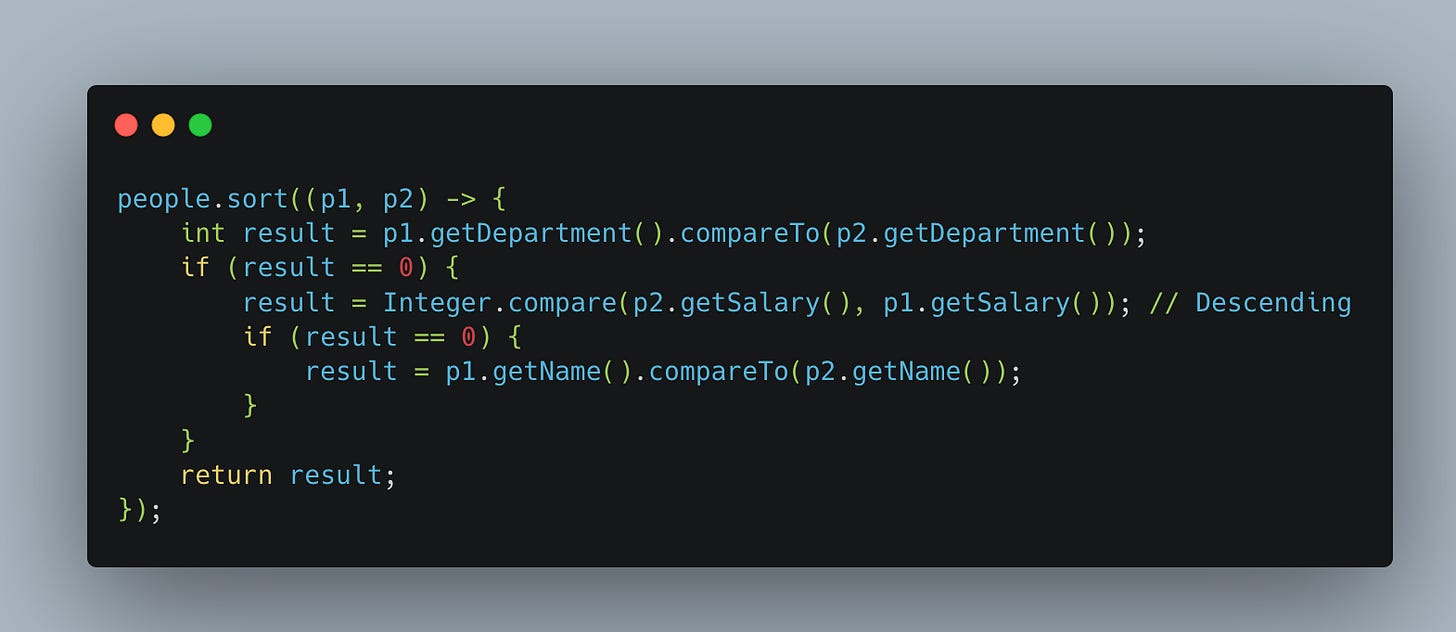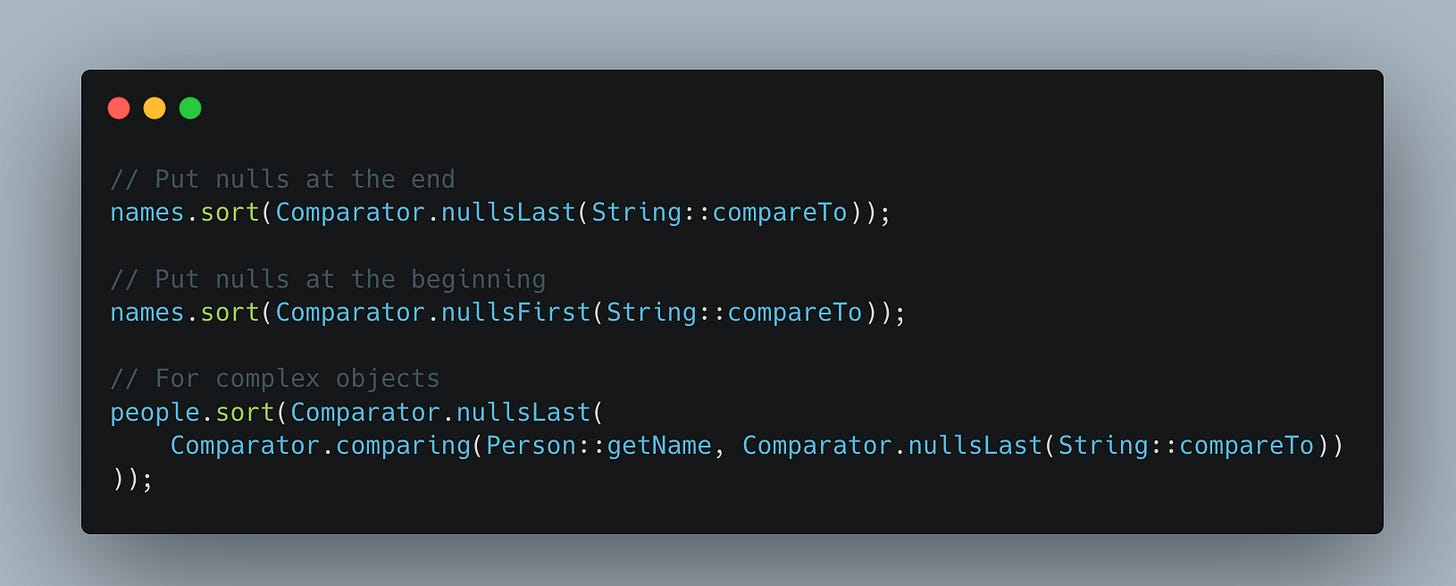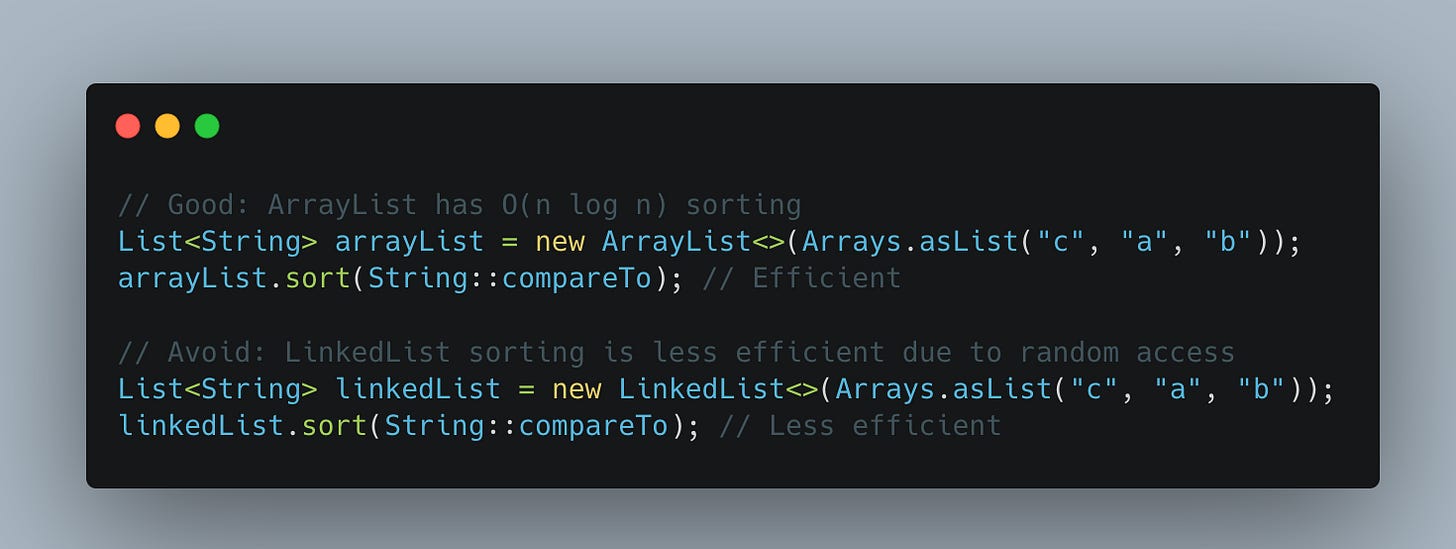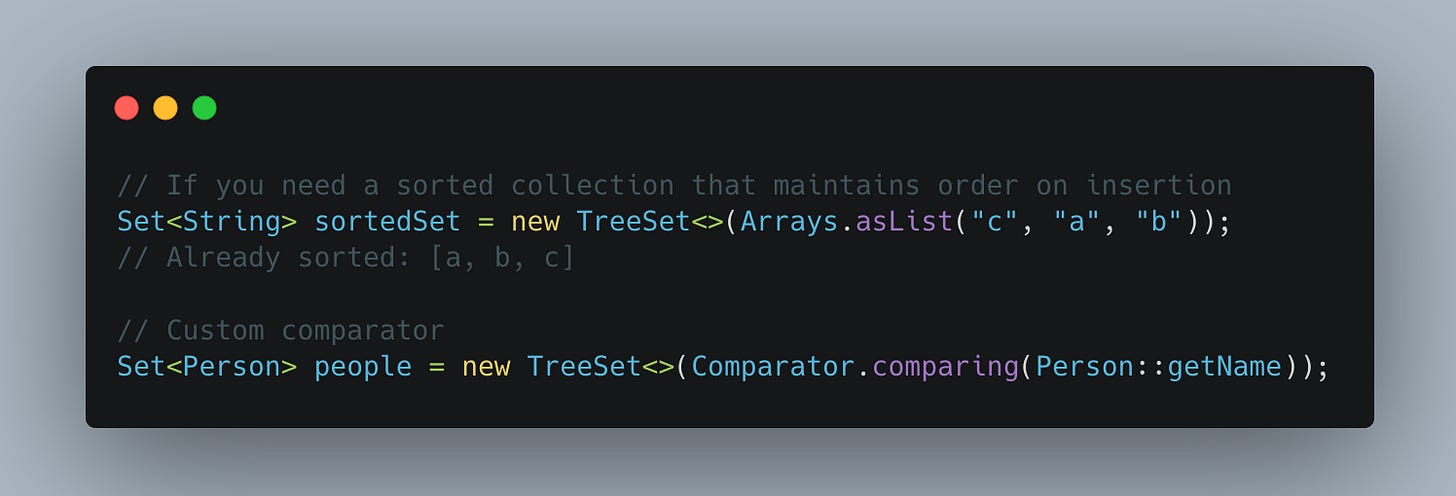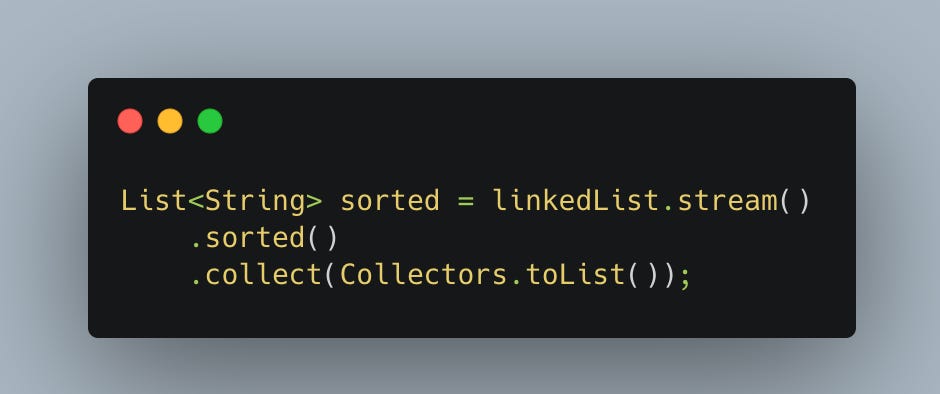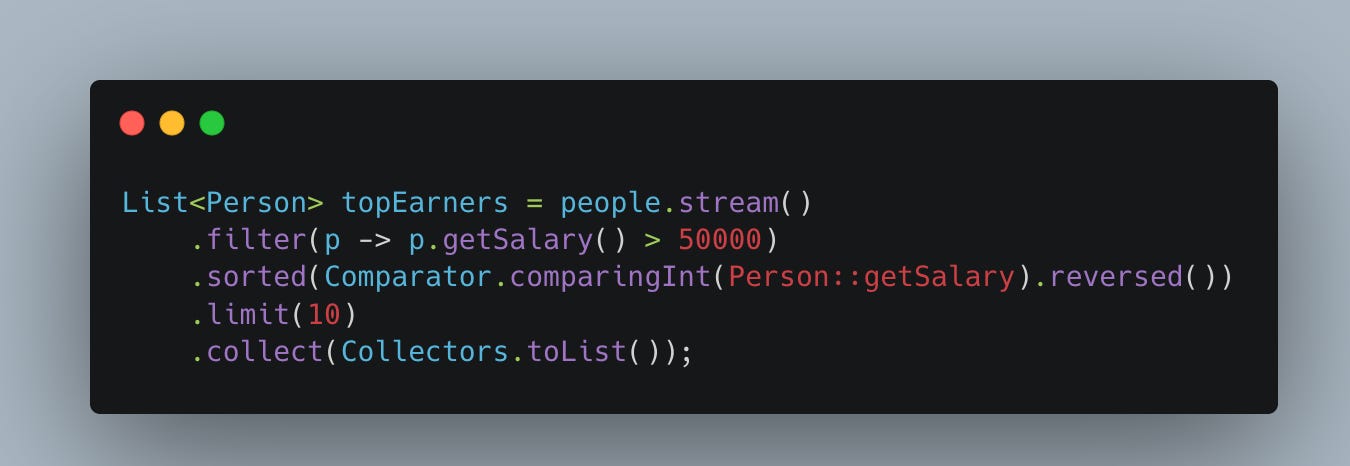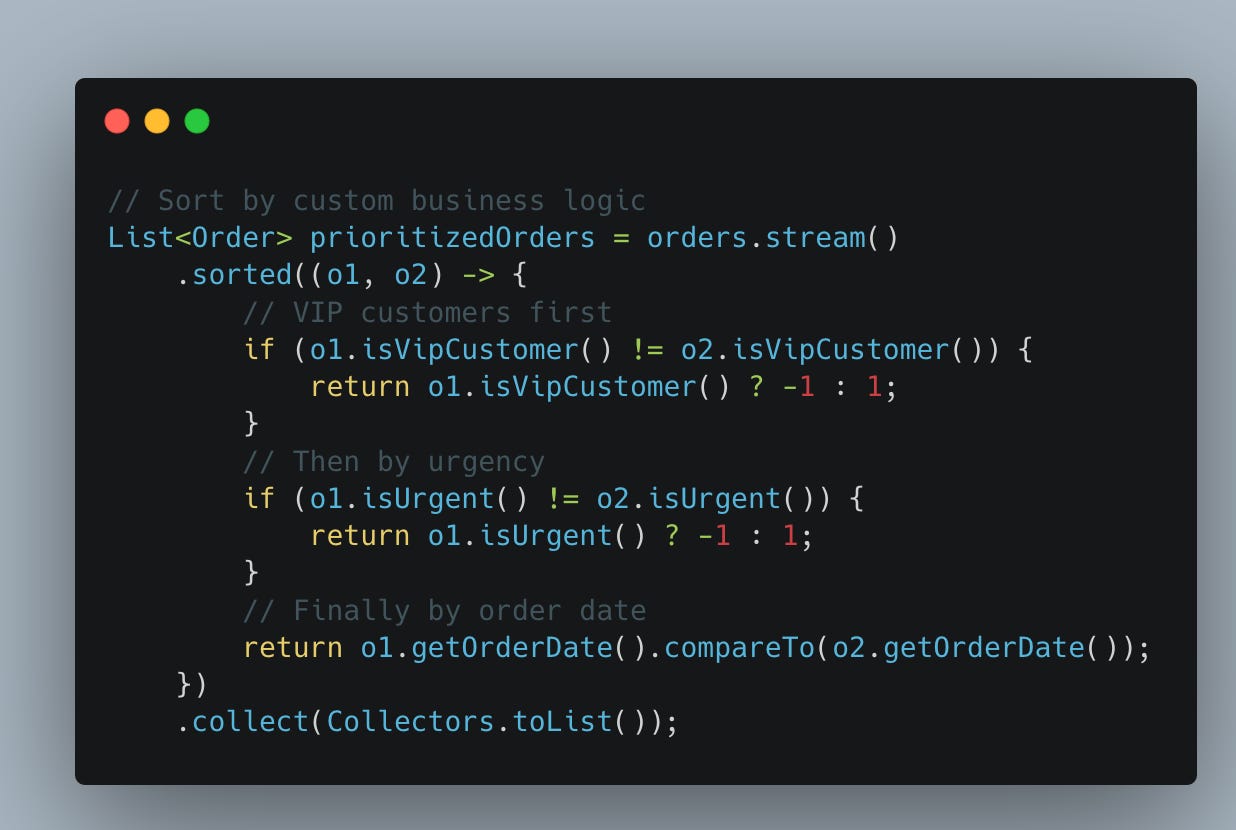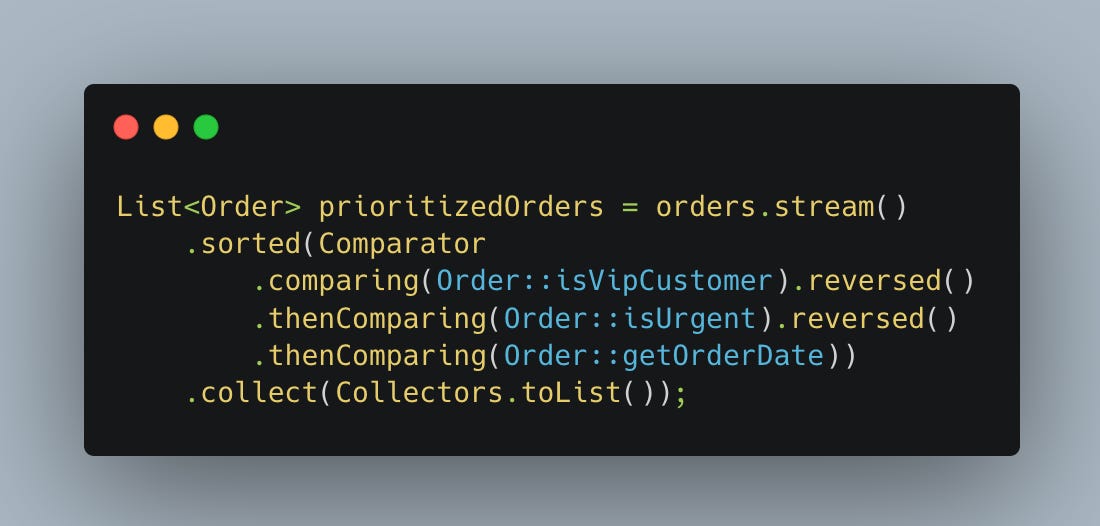Top 5 Tips For Sorting Java Collections
Master Modern Sorting Techniques
Introduction
Sorting remains one of Java's fundamental operations, yet many developers stick to basic approaches without exploring the powerful features that modern Java offers.
Whether we are working with simple lists or complex custom objects, knowing the right technique can make our code more readable, performant, and maintainable.
🚀 Java + Spring Boot + SQL Interview + Certification Prep 🚀
🎯 Perfect for aspiring developers, job switchers & interview prep warriors!🔥 What’s Inside (PDF format):
Grokking the Java Interview (Vol 1 & 2)
Grokking the Spring Boot Interview
Grokking the SQL Interview
Java SE 17 Developer Certification (1Z0–829) Guide
250+ Spring Framework Certification Practice Questions
1. Use Method References and Comparator Factory Methods
Instead of writing verbose anonymous functions, we can leverage Java 8’s method references and Comparator factory methods for cleaner, more readable code.
Instead, we can do this:
2. Multi-Field Sorting with thenComparing()
When we need to sort by multiple criteria, we can chain comparators using thenComparing() Instead of writing complex comparison logic.
Instead, we can do this:
This approach is more readable, less error-prone, and easier to modify when sorting requirements change.
3. Handle Null Values Properly
Null values in collections can cause NullPointerException during sorting. We can use nullsFirst() and nullsLast() to handle them explicitly.
Solution
We should always consider how null values should be handled in our sorting logic to avoid runtime exceptions.
4. Choose the Right Collection Type for Performance
Different collection types have different sorting performance characteristics. We should choose wisely based on our use case.
For frequently sorted data, consider TreeSet:
If we are doing one-time sorting of a large dataset, we should convert to an ArrayList first:
5. Use Streams for Complex Sorting Scenarios
For complex sorting requirements or when we need to chain sorting with other operations, streams provide powerful and readable solutions.
Sorting with filtering:
Custom sorting logic:
Parallel sorting for large datasets:
Bonus: Common Pitfalls to Avoid
Collections.sort()modifies the original list - use streams if you need immutability.Be careful with floating-point comparisons — use
Double.compare()instead of direct comparisonDon’t modify the original list when you need to keep it unchanged — use streams or create a copy first
Conclusion
Mastering these five sorting techniques will significantly improve your Java code quality and development efficiency.
Modern Java’s sorting capabilities go far beyond the basic
Collections.sort()- they offer elegant, readable, and performant solutions for even the most complex sorting requirements.


